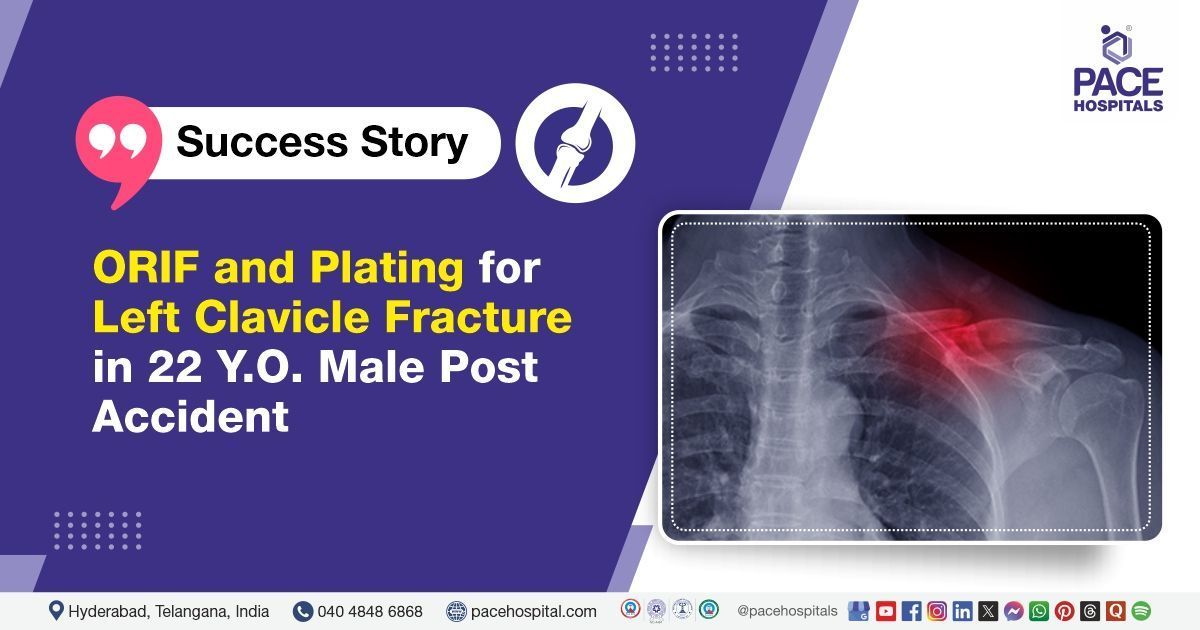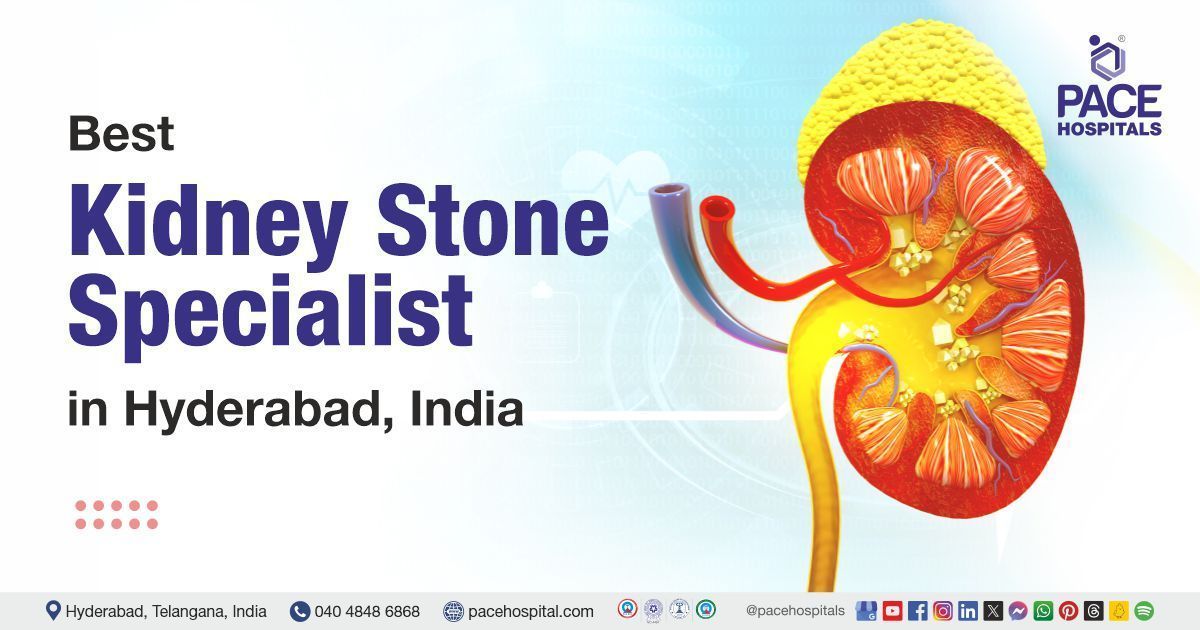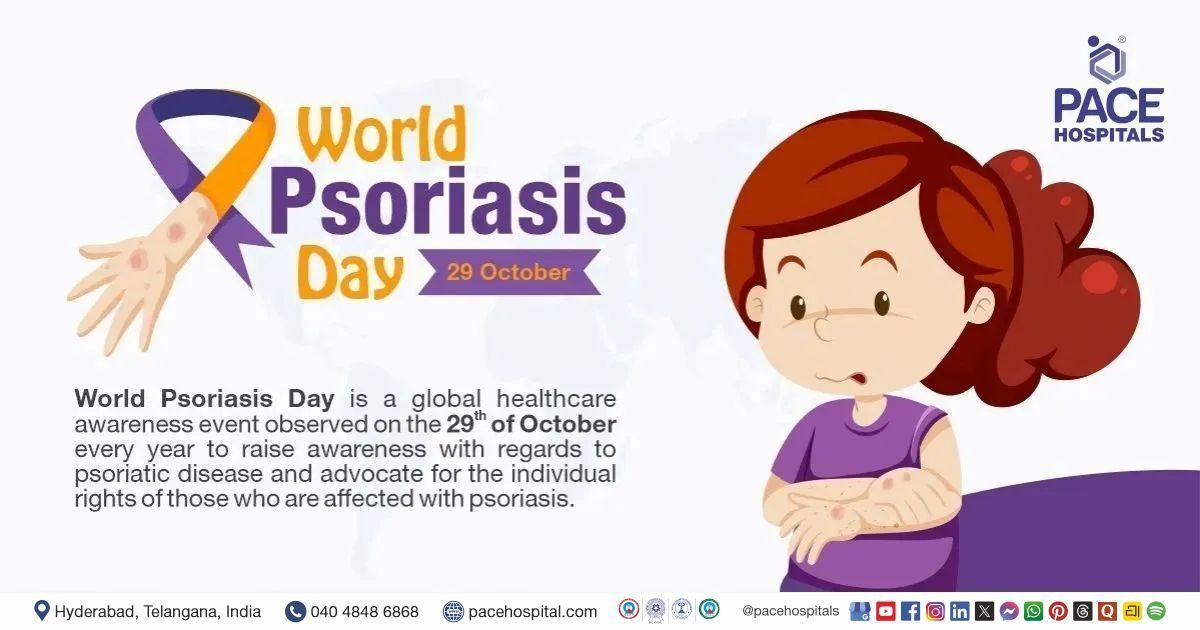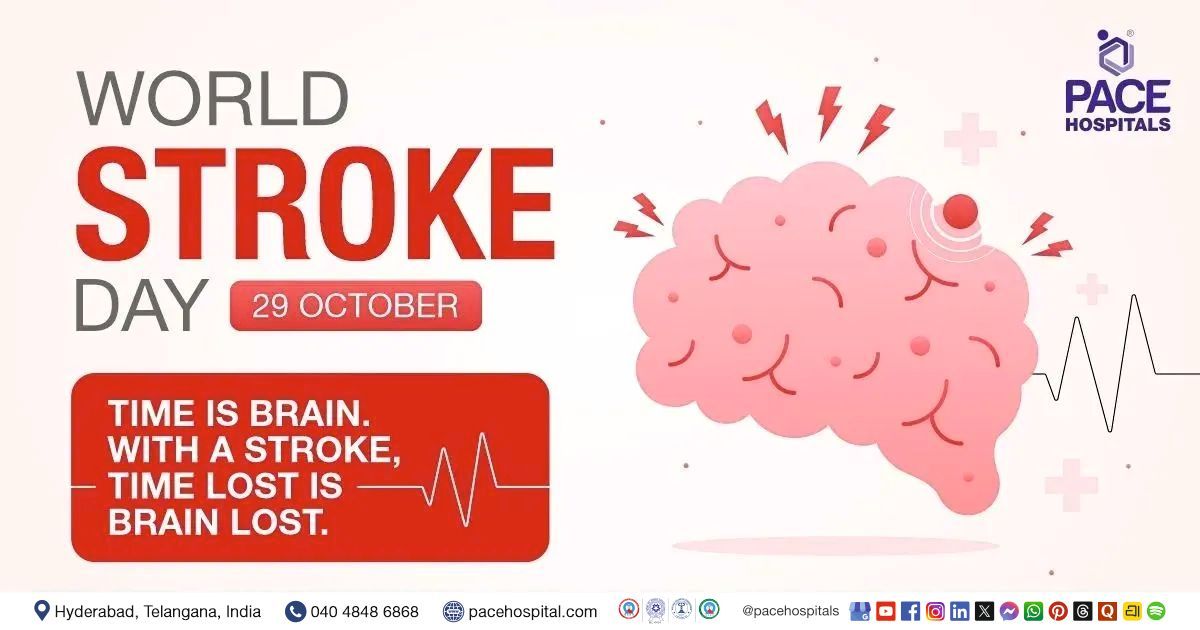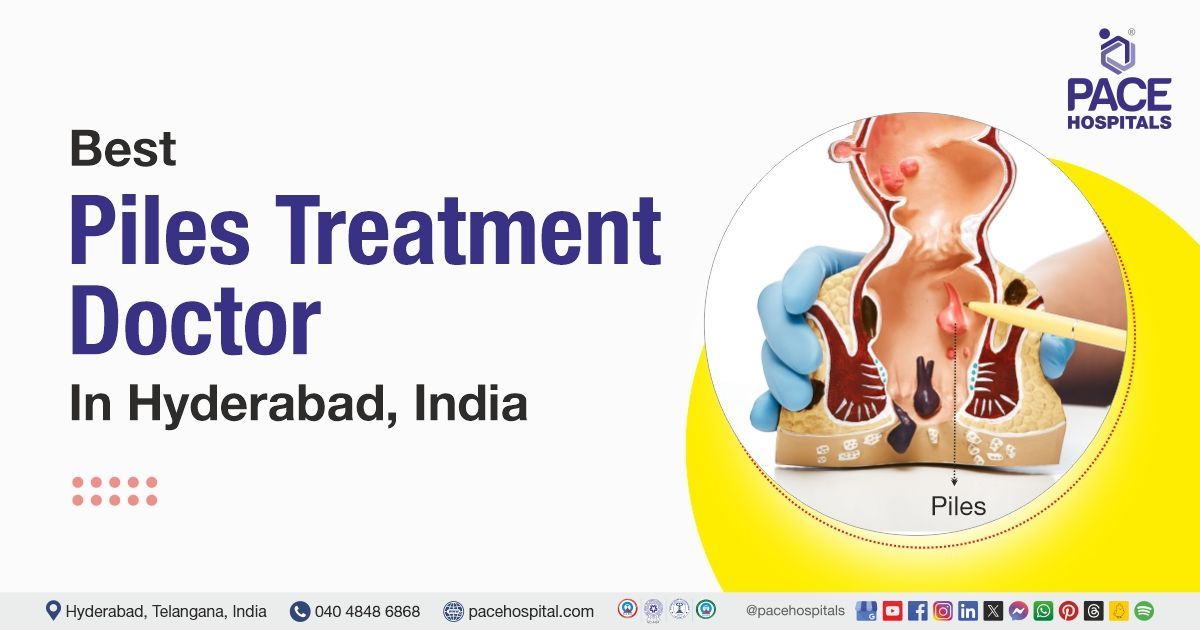ORIF and Plating for Left Clavicle Fracture in 22 Y.O. Male Post Accident
PACE Hospitals' expert Orthopedic team successfully performed an open reduction and plating (ORIF) of the left clavicle on a 22-year-old male patient who presented with pain and swelling in the left shoulder following a self-fall from a bike in a road traffic accident. Surgery was performed to relieve symptoms, prevent further complications, and enhance the patient's mobility and quality of life.
Chief Complaints
A 22-year-old male patient with a
body mass index (BMI) of 23 presented to the Orthopedics Department at
PACE Hospitals, Hitech City, Hyderabad, with chief complaints of pain and swelling in the left shoulder following a history of a road traffic accident (self-fall from the bike). He also reported lacerated wounds over the left cheek and right elbow. The patient had difficulty using his left upper limb due to pain, which had started to interfere with his daily activities and mobility.
Past Medical History
The patient had no known history of drug allergies or chronic illnesses. The absence of comorbid conditions was considered clinically favorable, as it minimized the risk of intraoperative and postoperative complications and supported a smoother, more stable recovery.
On Examination
Upon admission to PACE hospitals, the patient was hemodynamically stable. The respiratory system showed bilateral air entry; the cardiovascular system had audible S1 and S2 heart sounds. The abdomen was soft and non-tender, and the central nervous system examination indicated that the patient was alert, conscious, and oriented to time, place, and person.
Systemic examination, the left shoulder showed swelling and tenderness with crepitus (crackling sound) in the middle third of the clavicle region. The range of motion (ROM) of the left shoulder was painfully restricted. The distal neurovascular status of the left upper limb was intact. ROM of the left elbow was normal. There was a 3 cm x 2 cm lacerated wound over the left cheek, which was contaminated, and a 2 cm x 2 cm lacerated wound over the right elbow.
Diagnosis
Following the examination, the Orthopedic team performed a comprehensive assessment, which included a thorough review of the patient’s medical history and clinical findings. Based on characteristic symptoms, a provisional diagnosis of Fracture of the left Clavicle (collarbone) was made.
To support the clinical findings, laboratory tests and imaging studies were undertaken.
The X-ray showed the left collarbone was broken, and the pieces were out of place and overlapping, but the nearby shoulder joints were normal. These radiographic findings correlated with the patient's symptoms and confirmed the provisional diagnosis, guiding the team toward planning appropriate surgical intervention.
Based on the confirmed diagnosis, he was advised to undergo Collarbone Fracture treatment in Hyderabad, India, under the care of the Orthopedic Department, ensuring comprehensive management.
Medical Decision-Making (MDM)
Given the patient’s symptoms, functional limitations in daily activities, and the confirmed diagnosis of a Fracture of the left Clavicle, surgical intervention was considered essential.
Following a detailed discussion with the patient and his guardians, Dr Raghuram, Consultant Orthopedic Surgeon, recommended Open reduction and plating (ORIF) of the left clavicle would be the most appropriate and effective treatment to achieve optimal stabilization and promote recovery.
The patient and his family were thoroughly counselled regarding the nature of the condition, the surgical procedure, potential risks, and the necessity of Open reduction and plating (ORIF) of the left clavicle to restore function and stabilize the left clavicle.
Surgical Procedure
Following the decision, the patient was scheduled to undergo Open reduction and plating (ORIF) of the left clavicle Surgery in Hyderabad at PACE Hospitals, under the supervision of the expert orthopedic Department.
The following steps were carried out during the procedure:
Preoperative Preparation and Anesthesia
The patient underwent preoperative evaluation and was cleared for surgery. The patient was placed in the supine position, and general anaesthesia was administered.
Surgical incision and Exposure
An incision was made over the clavicle borders to expose the fracture site.
Fracture Assessment and Preparation
The fracture was found to be comminuted. Interfragmentary screws were used to hold the fracture fragments.
Fracture Reduction and Fixation
The fracture was reduced under fluoroscopic guidance (CARM). A Class II medical device locking plate was applied and secured with interfragmentary screws for optimal plate positioning. The reduction was confirmed with fluoroscopic imaging.
Hemostasis and Closure
Hemostasis was successfully achieved. The wound was closed in multiple layers. Vicryl 2-0 sutures and staples were used for closure.
Postoperative Care
The postoperative period was uneventful. The patient was mobilized early and was encouraged to walk with support during the hospital stay under supervision. He had received intravenous antibiotics, analgesics, and supportive treatment. Wound dressings were performed regularly and remained clean and dry, with no signs of infection. At the time of discharge, the patient was hemodynamically stable, his pain was well controlled, and the surgical site appeared healthy.
Discharge Medications
Upon discharge, the patient was prescribed a course of oral medication to support postoperative recovery and prevent complications. This regimen included antibiotics to reduce the risk of surgical site infection, analgesics for effective pain management, and proton pump inhibitors (PPIs) to prevent gastrointestinal irritation associated with analgesic use. A pancreatic enzyme supplement was added to aid digestion; Multivitamin supplements were included to support overall healing and recovery. Additional supportive treatments were also advised as part of the post-discharge care plan.
Advice on Discharge
The patient was advised to use an arm sling for support following the procedure. Elbow and wrist range of motion (ROM) exercises were also recommended to promote mobility and recovery. These measures were implemented as part of the postoperative rehabilitation plan.
Emergency Care
The patient was informed to contact the emergency ward at PACE Hospitals in case of any emergency or development of symptoms such as fever, abdominal pain, and vomiting.
Review and Follow-Up
The patient was advised to return for a follow-up visit with the Orthopedic Department at PACE Hospitals after 1 week for further evaluation.
Conclusion
This case highlights the effectiveness of Open reduction and plating (ORIF) of left clavicle surgery in restoring shoulder alignment and function, reducing pain, and improving quality of life in patients with clavicle fractures, enabling a return to daily activities after recovery.
Significance of Early Surgical Intervention in Traumatic Clavicle Fractures for Preventing Functional Decline
When treating displaced clavicle fractures, early surgical intervention with ORIF is essential, particularly in trauma cases involving young adults. Significantly displaced fractures may result in poor healing outcomes, chronic shoulder dysfunction, and extended absence from daily activities if treatment is delayed or conservatively managed. This case demonstrates the preventive value of surgery in avoiding long-term morbidity and occupational disability because prompt surgical stabilization by the orthopedic doctor / orthopedic surgeon not only reduced pain and mechanical instability but also maintained shoulder movement and functional capacity.
Share on
Request an appointment
Fill in the appointment form or call us instantly to book a confirmed appointment with our super specialist at 04048486868

